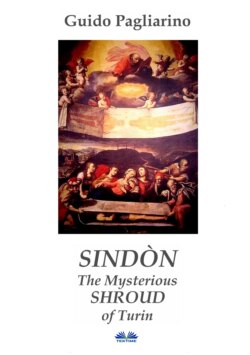Читать книгу Sindòn The Mysterious Shroud Of Turin - Guido Pagliarino - Страница 20
ОглавлениеAccording to various Greek, Arab and Syriac traditions, in the middle of the 10th century the Eastern Emperor Romanus I Lecapenus wanted the mandylion to be moved to Constantinople. The Edessa Christ's Face was identified and venerated as an acheropito, or “not made by human hands”21 .. The region of Anatolia was ruled by the Turks, who regarded the mandylion to be the protector of the city, being Muslims and considering Jesus as the second most important prophet after Muhammad22 . In the spring of A.D. 943, the Emperor Romanus I declared war on the Turks to claim the mandylion's protection and, after sending a powerful army led by General John Kurkuas, conquered Edessa. The Byzantine general asked the emir of the defeated city to deliver the mandylion, in the meantime hidden by the besieged; in order to achieve his goal, he offered indulgence to the inhabitants, released 200 prisoners and promised to pay 12,000 precious metal coins (maybe silver coins, or even gold coins). The emir accepted and handed over the sacred relic to Kurkuas, despite the protests of the people. The mandylion arrived in Constantinople on August 15th 944, during the day of the Assumption of the Virgin Mary (at that time, Dormition of the Mother of God). The mandylion – or the Shroud folded? - was kept in the Pharos chapel adjacent to Boukoleon, the palace of Romanus I.
A miniature painting of the Skilitzis Code, a Byzantine manuscript produced between the 11th and 13th century, and currently kept at the Madrid National Library, shows the handover of the mandylion to the Emperor Romanus I Lecapenus (sided by the Patriarch of Constantinople Theophylact and dignitaries). In the middle of the picture below, it is clearly visible the almost three-dimensional image of Christ rising from the cloth:
On August 16th 944 A.D., the day after the mandylion arrived in Constantinople, the Archdeacon and Referendarius of the Cathedral of Hagia Sofia Gregory, in charge of official relations between the Patriarch and the Emperor, pronounced a sermon concerning the event from the cathedral pulpit. The respective manuscript is preserved in the Vatican Archives (Cod. Vat. Gr. 511, ff. 143-150v, classified as De Christi imagine Edessena23 ). After talking about the image arrived from Edessa in the current year 6452 (according to the biblical dating, corresponding to A.D. 944), Gregory passionately described the mandylion, which he called shroud, clearly in reference to the three synoptic Gospels (Matthew, Mark and Luke)which, unlike the John's Gospel, used that term. About the image, Gregory said: “Imprinted only by the agony sweats from the face of the Originator of Life, falling like drops of blood,and by the finger of God. For these are the beauties that have made up the true imprint of Christ; since, after the drops fell, it was embellished by the drops from his own side. Both are highly instructive: blood and water here, there sweat and image. Oh equality of realities, since both have their origin in the same person; the source of living water can be seen and it gives us water, showing us that the origin of the image made by sweat is, in fact, of the same nature as the origin of that which makes the liquid flow from the side. Gradually you get used to something you had never seen before and whose eyes and mind had no experience. An image not outlined on the edges, that fades into nothing, that if you approach it, pale and disappear, and if you move away it reappears; a color faded, very pale, that you could not define, almost out from the chromatic scale; two long imprints of a naked body, front and back, so strangely and illogically put next to each other; a quantity of bloody signs, also imprinted on a skin in a supreme rigor mortis […] before plunging into that long speechless contemplation that is always, for anyone, the first shroud watching. The first impact with the shroud, is for everyone a long look at a long silence”.
Obviously, the use of the term shroud in that old sermon is not an evidence that Gregory wished to refer to the Shroud of Turin. However, it is really important he mentioned the full body of Jesus, and not only his face, because it suggests that the relic was a burial cloth and not a simple handkerchief.
